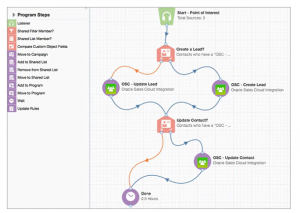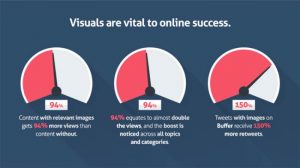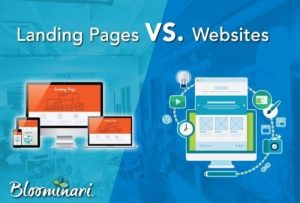— September 13, 2019
If you’ve ever written a report or spoken in front of a group, whether for your classmates in Communications 101 or fellow C-suite executives, one tactic you’ve surely used is a PowerPoint presentation. This program has probably been used billions of times. And it works. Or so you would think—that’s actually quite far from the truth. Sure, a PowerPoint is an effective way of showcasing data but certainly isn’t a strong engagement tool. Science proves this isn’t the best way to encourage people to care about the information you’re sharing with them.
Could this be one of the reasons leaders hit a brick wall when it comes to improving engagement among their people? Could the good ol’ PowerPoint be the wrong way to share information?
Your Presentation Is Failing You
Undoubtedly, organizations around the world are spending significant time and money to create the best strategy for their businesses. The people behind the strategy are likely very experienced and smart. They have solid reasoning behind their strategy and have created clear steps to achieve it. Once this is all baked, they often share the strategy with the masses via PowerPoint or another traditional presentation method. And this is when things get stuck.
Employees fail to connect with the strategy, so they don’t execute it the way the leaders had envisioned. Leaders wind up feeling frustrated with the lack of progress. Managers are stuck in the middle trying to motivate their teams and please the leadership. And employees go to work each day expected to execute something they either don’t really care about, don’t really understand, or—even worse—both. It’s a tale as old as business itself.So if we know the problem, why can’t we identify a solution? I think it’s because most leaders have been blindly leading in the same way leaders of the past led things.
It’s time to change and share our vision in a much more compelling, memorable, and engaging way.
Here’s the reality: the PowerPoint presentation on the future strategy, annual operations plan, or just next year’s priorities allows leaders to check the communication box. BUT, it’s almost always dead on arrival when it comes to mobilizing the hearts and minds of the people in the organization.
Our Brains Don’t Want Stats
You’ve probably heard some of these proof points before—all which validate the power of storytelling over presentations—but let’s review:
- Cognitive psychologist Jerome Bruner suggests we are 22 times more likely to remember a fact when it has been wrapped in a story. And since most PowerPoint presentations deliver one statement per slide, or maybe a trio of facts, they aren’t able to really convey much of a story.
- Scientists have many reasons for the above statistic, but the gist is that stories engage much more of our brains than logic and facts do.
- Scientist, entrepreneur, and author Paul J. Zak has studied storytelling and its effects on attitudes, beliefs, and behavior. He’s discovered that character-driven stories not only elicit a physiological response, but also inspire behavior change. And with business strategies changing regularly to keep up with the changing marketplace, tech advances, consumer demands, and more, what leader isn’t in pursuit of this?
- Weaving learning into a story makes learning more interesting, activates the brain’s positive emotional state, and hooks the information into a strong memory template. Tell a good story and your people will keep it top of mind!
- The most successful storytellers often focus listeners’ minds on a single important ideaand then take no longer than a 30-second Super Bowl spot to forge an emotional connection. We live in a fast-paced world. Leaders must get their point across in an effective yet succinct manner.
There’s really no disputing the power of a good story. A slide of bullet points with impressive percentages and statistics won’t cut it. We need an emotional connection to what the speaker is saying. We need the speaker’s story to resonate with our minds and our hearts.
Retiring the Trusty PowerPoint in the Pursuit of Engagement
When PowerPoint first debuted, it seemed like the answer to all of our presentation dreams. But today’s audiences don’t want to see slides. They don’t want to hear someone speak words they can easily read themselves. It feels like a waste of their time. Not to mention it’s really boring.
Chapter 3 of What Are Your Blind Spots? Conquering the 5 Misconceptions that Hold Leaders Back, which I co-authored with my longtime colleague and leadership expert Rich Berens, is all about engaging employees and why presentations do anything but. Here we share insights from Edward R. Tufte, professor emeritus of political science, computer science, and graphic design at Yale.
Tufte says, “Slideware may help speakers outline their talks, but convenience for the speaker can be punishing to the story, content, and the experience of the audience. The standard PowerPoint presentation elevates format over content and turns everything into a sales pitch.”
And when your audience feels they’re being sold something they wouldn’t buy if they had the choice, you’ve failed. That’s not an ideal way to share the strategy you think is going to redefine your business. And it’s clearly not an effective engagement tactic.
The Answer to Disengagement: Turn to Co-Think
A recent Harvard Business Review article, “The 3 Things Employees Really Want: Career, Community, Cause” discusses three categories of motivators employees value most when it comes to engagement at work.
- Intrinsic Motivation: Being able to use strengths along with the opportunity to learn and grow
- Connectedness and Belonging: Having a sense of being respected, recognized, and cared about
- Pride: Identifying with the organizational mission and feeling they make an impact in bringing that mission to life
Is your presentation addressing these three things? Probably not. As noted earlier, Chapter 3 in Blind Spots gives you the full breakdown of what you can be doing to help engage your people at work. I want to leave you with one piece of advice that will truly create authentic engagement within your organization: invite your people to co-think.
The dignity people feel when their ideas and perspectives are valued, and the power that is unleashed when they freely contribute their discretionary effort, is an unparalleled competitive advantage for any organization.
We learned long ago that people will tolerate the PowerPoint-driven conclusions of their leaders, but they will act on their own conclusions. So if we want our people to behave differently, to engage them in their work, they have to have different conclusions about what’s critical to the business and how they contribute to its success. The only way we’ll change these conclusions is by co-exploring, co-examining, and co-thinking the challenges of our businesses.
If you do one thing today: put down the presentation, speak from your heart, and include your people in your strategy-creation conversations. With engagement levels stagnant for so long, it’s time to stop doing things the way you’ve always done them. It’s time to start addressing disengagement head on. It begins by asking what conversations our people need to have to truly co-think the essential challenges of our businesses, and to step into the solution space with judgement, care, and creativity to answer those challenges.
For more information on engaging employees, why and how to define it, check out Chapter Three in Rich and Jim’s latest book, What Are Your Blind Spots? Conquering the 5 Misconceptions that Hold Leaders Back.
Originally published here.
Business & Finance Articles on Business 2 Community
(27)
Report Post







